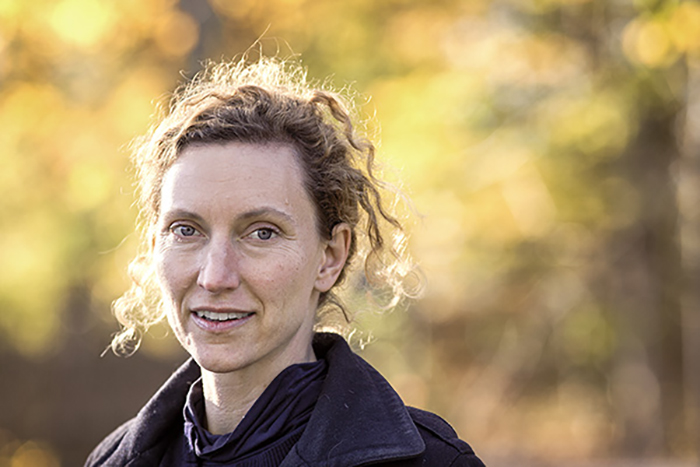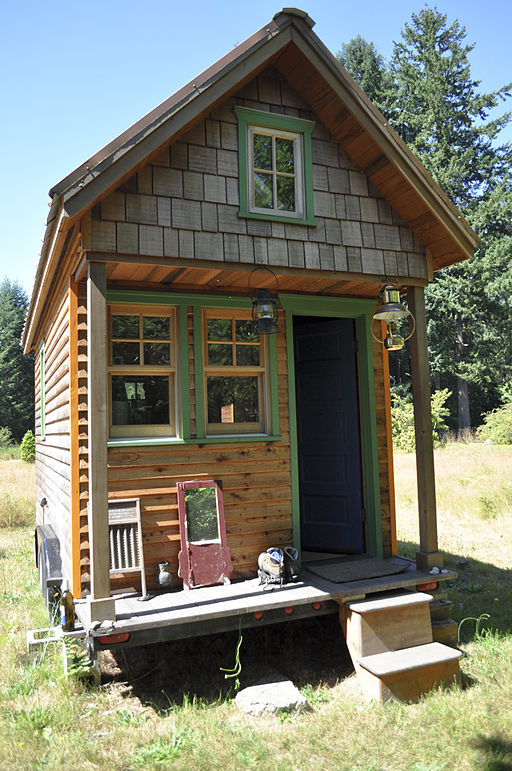Reducing consumption is climate smart – but how to make it attractive?

Borrow your neighbour’s ladder. Repair that broken bike. Share your wardrobe. There’s more to sustainable consumption than simply buying eco-labeled products. Karin Bradley heads a research project that aims to make sustainability the easiest choice.
There was little talk about the connection between consumption and climate change in the early 2000s, when Karin Bradley wrote her thesis on how to adopt a more environmentally-friendly lifestyle.
The debate at that time focused mostly on energy efficient buildings, driving less and possibly buying more organic food.
“At the same time, it was known that product consumption had a negative environmental impact, especially in the manufacturing countries, with increased emissions, depletion of non-renewable resources such as minerals, and the overuse of fresh water,” says Bradley, an Associate Professor and researcher at the Department of Urban Planning and Environment at KTH .
She wanted to take a deeper look into the issue, but to do it in a constructive way.
“How can living on limited resources be made attractive? I wanted to focus on what can actually be done. It felt particularly germane for young adults who mostly hear how bad things are.”
Bradley started her research into sustainable consumption and the sharing economy in another project, “Urban Sharing”. She went to London, Barcelona and Malmö to study the emergence of various citizen initiatives for sharing goods and services.
Today there are numerous services for lending swapping or renting products.
In many Swedish towns people now borrow what they wear from clothing libraries. Maker spaces have cropped up, providing workshop-like places where people share knowledge, tools and machinery, such as the so-called bicycle kitchens where people can learn how to fix their own bike.
“These are examples of grass roots-driven, rather than profit-driven, enterprises that contribute to sustainable consumption while at the same time encouraging social interaction,” Bradley says.
“It is not simply environmental awareness that has led to the growth of the sharing economy. New technology has also played a part,” Bradley says.
“We now have geolocation-based systems on the internet and secure payment systems. Their arrival has made it easier to enter into transactions with individuals in other countries.”
In the recently-launched research programme, Mistra Sustainable Consumption , Bradley and her team are going to investigate what will be required to switch to more sustainable consumption patterns in Sweden.
Bradley wants to see more action from politicians and society to make sure that what is good for the environment becomes the self-evident, readily-available choice.
“It’s not enough to state what is a good environment choice. We need powerful policies with a combination of legislation, financial incentives and information. Realignment needs not only to be driven by politicians, but also by the enterprise sector, organisations and citizens.”
Pending greater political direction, we as individuals can do our bit, she says.
“Sometimes, it feels as though it doesn’t matter what you do as an individual, as long as politicians fail to adequately address the situation. But the small things we do ourselves can help in nudging society towards a more sustainable approach in general.

“As citizens, we need to show politicians that we are willing to change the way we live. This will then give them the courage to act.”
Via an online questionnaire, Bradley and her team have collated around 700 different examples of what people see as sustainable when it comes to food, furnishings and holiday travel.
Recommendations include travel by train and staying longer at travel destinations, or doing things such as spending your holiday working on an organic farm.
Furniture can be made from recycled materials or repaired. Another trend is the tiny house movement, in which people are building compact homes that limit space for furniture and gadgets.
Food can be more plant-based, and insects can be eaten as a good source of protein. Stores can display vegetarian products more prominently to make them easy to choose. Individuals can grow their own vegetables and eat less in general. And food waste products can be put to good use.
“One of the best things you can do is to actually eat less food. That would take us a pretty long way. Food volumes have increased and not just in the case of food waste,” Bradley says.
The researchers have also held workshops with groups whose voices are not heard that much when it comes to environment issues: pensioners in the north of Sweden and recently arrived women from the Middle East. The examples collated have yet to be evaluated.
“We already know certain things, such as there are lower emissions from trains than aircraft. But is it sustainable to go on a driving holiday in an electric car? That depends on what you are comparing it with.”
Things that start out being sustainable can also change in time. Airbnb started with offering temporary accommodations in empty apartments. As interest in the platform grew, some people began to use their homes expressly to rent to tourists.
“Many cities are now having problems with rising rents and housing shortages for the local population. At the end of the day, this will perhaps become neither socially nor environmentally sustainable, as Airbnb leads to increased travel.
“Some cities are trying to tackle the downsides, however. Amsterdam, for example, has restricted the number of days you can rent a dwelling per year.”
Once the researchers have evaluated what can actually be considered sustainable, the next step will be to investigate how this can be communicated to larger groups.
“We should look at instruments to make going by train a genuine alternative to flying. One option could be more flexible booking systems when travelling between countries.”
One area that Bradley herself is interested in researching, in cooperation with a number of municipalities, is repair workshops for furniture and furnishings, where people can share knowledge and provide help and assistance.
The idea is to make it easier for people who want to repair the products they already own instead of buying new replacements.
Our consumption habits in 10 years’ time
“Some municipalities have started to experiment with recycling centres that become a hub for sustainable consumption. You can collect something that has been thrown out, either to repair or transform into something more personal.”
Another benefit for the municipalities is that they can also create good public spaces, something that is part of their brief.
“These can become meeting places where people can play, create, do things together – instead of simply being passive consumers.”
Bradley offers some reflection on what people’s consumption habits might look like 10 or 15 years from now.
“I hope that by then, people who live on limited resources and holiday in their local area will not be seen as odd. And that people think it is fun and meaningful to share resources.”
Ann Patmalnieks


